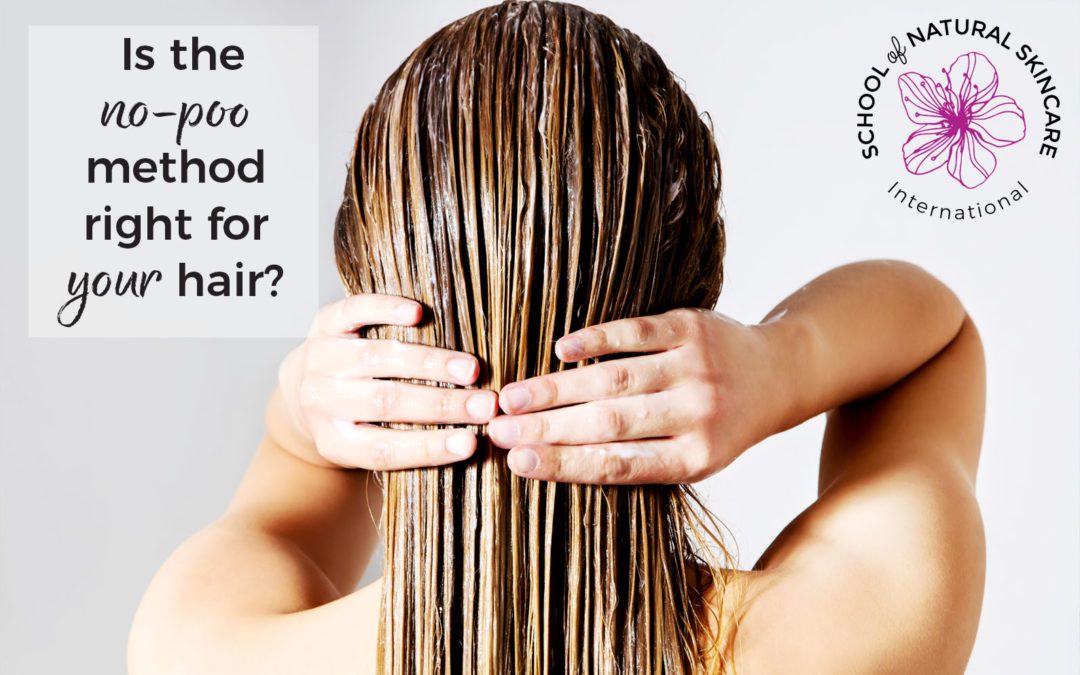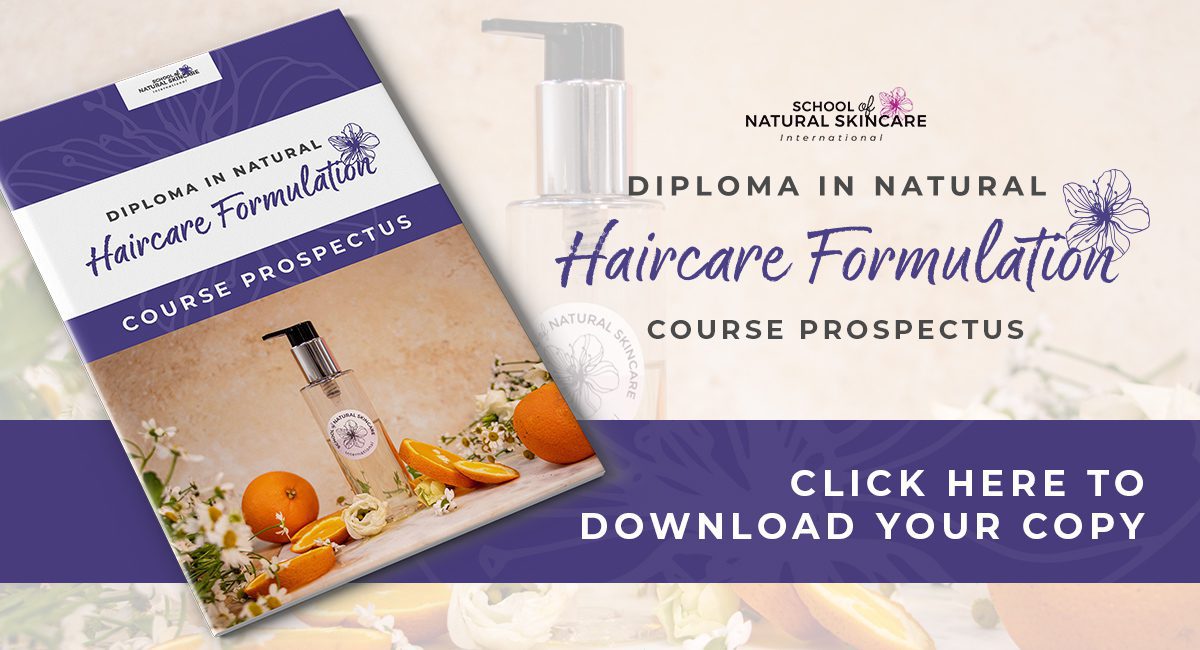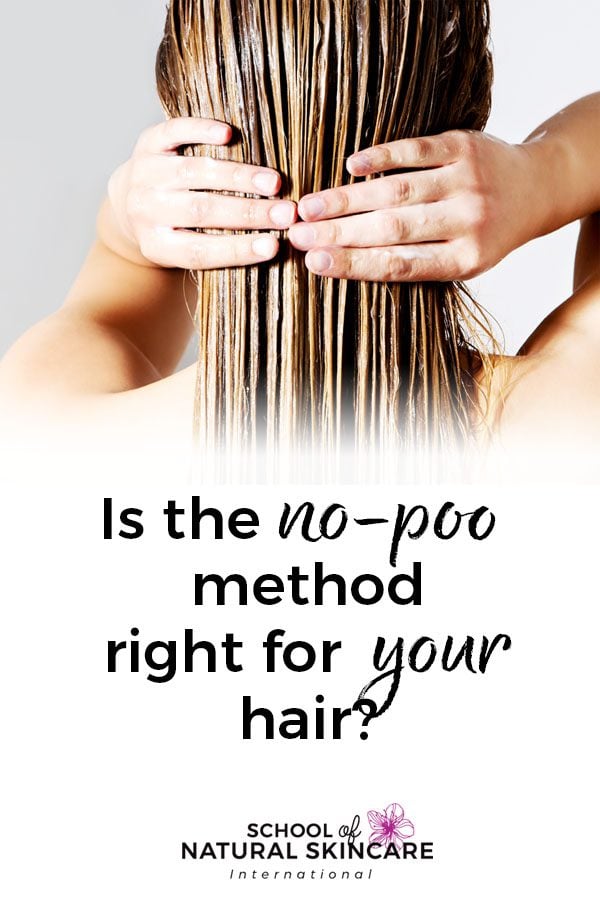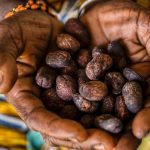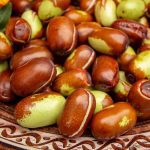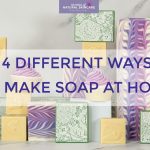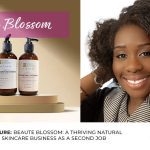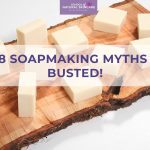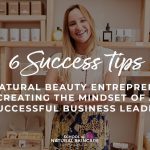If you’ve spent any amount of time cruising around the natural beauty quadrant of the internet, you’ve undoubtedly heard of the term “No-Poo.” No-Poo can mean many different things to different people—and the definition has started to evolve and change in the last few years—but essentially what it means is avoiding commercially-available shampoo in favor of assorted “natural” alternatives, in an effort to detox the hair, and balance out the overproduction of oil.
The original No-Poo method involved scrubbing the hair and scalp with a quantity of baking soda in water to replace the shampoo, and then following with a diluted apple cider vinegar rinse. It is also often suggested to do this process less frequently than most people tend to shampoo their hair—every few days, rather than every day. Sometimes the baking soda is formed into a paste with a splash of water and applied directly to the scalp. Other times it’s suggested to dilute it further with water so it is more of a fluid consistency, and then it is sprayed onto the hair. The overall idea though, is that baking soda, as one single ingredient, is natural and effective enough to be used as a scrub to cleanse the hair. The apple cider vinegar can be poured or sprayed onto the hair, and is thought to counteract the baking soda and return the hair back into balance. After some period of time adjusting to this, the theory is that the hair and scalp will eventually rebalance, stop over-producing oil, and all problems will be solved!
Since the original idea emerged over ten years ago, No-Poo as a term has grown to encompass many other hair care regimens, including using water alone and physical scrubbing to cleanse, using ‘hair cleansers’ that really are shampoos but not labeled as such, switching to sulfate-free shampoos, and other methods and practices.
We want to talk about No-Poo and all of these variations, what’s actually going on with your hair when you do them, and what better alternatives are out there to get the natural and healthy results you desire!
What’s So Bad About Shampoo?
First things first: It’s very reasonable to want a more natural approach to hair care. That’s the entirety of why we started offering our Diploma in Natural Haircare Formulation course! There are so many wonderful options out there for natural, organic, safe, ethical, and effective hair care products. So, we get it.
For some people, No-Poo is part of an overall desire to lead a greener lifestyle, use less plastic packaging, or return to a simpler, or more minimalist way of life. Getting rid of bottles and other ‘must-haves’ can be a hugely liberating experience, when facing the demands of the commercial beauty industry. The allure of a two-ingredient, wash-and-go routine is pretty awesome. But for many, the reason why people want to stop using traditional, off-the-shelf shampoo is either to avoid certain ingredients, such as sulfates, or a general feeling of dissatisfaction with their current hair care regimen. Whatever they are doing, it’s just not working for them.
These are all perfectly good reasons to change up your hair care routine! If it isn’t working, and you want to avoid sulfates, that’s completely possible—without resorting to this No-Poo method.
As we’ve shared before, sulfates are some of the most harsh and cheap surfactants out there. They are in a lot of beauty products, and many people have poor reactions to them. Avoiding them is a good idea. But, of course, there are plenty of great sulfate-free shampoos that you can buy and make yourself! So what else is causing people to feel like the Baking Soda + ACV No-Poo method is their best choice?
The simplification and minimalism aspects play a huge part in this. The cost of those two ingredients is very affordable, meaning that each wash can cost just pennies—and that would be ideal, if it really was a great hair care solution.
Unfortunately, for the vast majority of people, it’s not.
(By the way: If No-Poo is working for you, that’s great! But if you’ve tried it with little success, or are thinking about trying it, but wondering whether it is effective on a more scientific level, or if you want to make your own natural hair care solutions, then read on!)
What Does No-Poo Actually Do?
If the No-Poo method works for you, that’s fine. But if you’re thinking of trying it, it’s not something we recommend. Here’s why.
Starting with the traditional Baking Soda + ACV No-Poo method, let’s discuss what those two ingredients do, and whether they’re actually able to accomplish what the No-Poo method describes.
Baking Soda, or Sodium Bicarbonate, is more properly known as Sodium Hydrogen Carbonate (NaHCO3.) It is a base or an alkali, measuring around a 9–10 on the pH scale. That’s far too high to be applied directly to the skin, or to the hair. When applied by itself to the scalp, baking soda may cause a burning sensation, especially if used regularly. Applying it undiluted to the hair will leave the cuticles open and prone to dryness, tangling, and damage. In many cases baking soda is dissolved in water prior to use, but even when applying it diluted to the hair, its pH is still far too high and will leave the cuticles on the hair open.
Apple cider vinegar counteracts the high pH of baking soda, but only to a point. This version of the No-Poo method usually ends up causing dry and brittle hair with no shine. Not everyone experiences this, but many do. And overall, there are some much better, more effective, and more reliable solutions that give you the benefits of this method without the drawbacks.
To counteract these problems, most No-Poo tutorials recommend incorporating a variety of other items, usually oils or butters, to the hair care routine. It’s no surprise that these help balance out the incredibly drying effect of the No-Poo routine. The oils and butters slick over the opened cuticles of each hair shaft, making it feel softer and healthier. But if the Baking Soda + ACV process is repeated, more damage will occur, starting the cycle of damage all over again. The idea that the hair and scalp will eventually equalize and balance just doesn’t ring true. Continually abrading your hair will, over time, cause damage.
We don’t recommend using this type of No-Poo method. Even though it might work in the short term for some hair types, it’s not a good long-term, one-size-fits-all natural solution.
Not Quite No-Poo…
Since the definition of No-Poo has grown to encompass a few other trends, we thought we’d cover them here as well. Some of them can actually be quite good choices, while others probably won’t achieve the desired results.
One other No-Poo variation is washing your hair with water alone. This is less damaging than baking soda, but it’s also less effective at cleaning. Most of the cleansing of this method seems to be dependent on physical cleansing and working with your hair’s natural oils, rather than stripping them away with the baking soda. Broadly speaking, for the right hair type and in the right situation, it is possible to to use this water-alone method, paired with brushing and scalp massage, to stretch the time between washes.
The flipside of the water-alone method is that it may not suit most hair types. Fine, thin, and straight hair that becomes too oily between washes has a very different set of needs than thick, curly, coiled hair that becomes too dry between washes. With just the water-alone method, there likely will be some additional mask, treatment, wash, or customization required to either balance oil overproduction, or moisturize dry hair. Of course, this isn’t bad either! We have lots of lovely hair treatments, rinses, and masks that you can learn to make in our Diploma in Natural Haircare Formulation course. It just really isn’t water-alone when you’re adding in treatments and so forth. You can find a shampoo and conditioner that both matches your hair values and provides the result you desire!
Another option that we see as a No-Poo variant is using a ‘hair cleanser’ or ‘hair wash.’ Many eco-friendly shampoos which are made with naturally-derived ingredients are sometimes labeled this way in order to emphasize their mildness and naturalness, but they are still shampoos; most of them still contain surfactants, along with other nourishing ingredients, in a water solution. They go by many names, but most of the ones we’ve found still do contain a surfactant. A gentler surfactant, typically, but people who truly believe they are going No-Poo, yet still using a surfactant-based shampoo (even one that doesn’t lather!) may not understand what their products are actually doing on the chemical level. These are still shampoos.
Many people turn to sulfate-free shampoos as part of a No-Poo method, which is both a very good idea and… still shampoo, despite the No-Poo label. There must be such a strong negative association with shampoo that makes people want to avoid the term, or a strong positive association with No-Poo as a movement, but regardless, shampoo is shampoo! And there are plenty of great sulfate-free shampoos (and ones with less aggressive surfactants, too) which can be excellent for your hair and scalp.
What Are Some Better Options?
Many of the reasons why people are drawn to No-Poo are the same reasons why we believe in learning how to formulate your own hair care products. You want organic, natural, vegan options that work, cleanse your hair, leave it shiny and bouncy. You don’t want to have to wash constantly to avoid an oily, bedraggled appearance. You want hair that is moisturized and healthy, protected against further damage, so it can grow thick and strong.
The good news is: You don’t have to strip your hair to get that, and you don’t have to strip your routine back to basics. Because, more often than not, these DIY methods just don’t work—and their long-term effects are not great.
You also don’t have to continue to use commercial products if they aren’t working for you. There are plenty of natural and organic hair care products coming on the market—but what’s even better is that it is totally possible to create your own. You can learn how to formulate shampoos, conditioners, treatments and other hair care products just like the professionals do, and learn how to tailor them to your hair type. So how about making a bespoke hair care product that does everything you want the No-Poo method to do, without the drawbacks? How about making your own range, tailored to suit your needs and desires, matching your values? You’ll know exactly what’s gone into them, because you chose the natural, organic, or vegan ingredients you chose.
Trust us, you don’t need to be a cosmetic scientist or a professional formulator to make gentle, effective, natural products that leave your hair and scalp looking—and feeling—like a million bucks.
Put down the baking soda and check out our Diploma in Natural Haircare Formulation!
Free Natural Shampoo & Conditioner Recipe Book
Learn to make your own natural shampoos & conditioners with luxurious natural ingredients.
Download this fabulous book and discover recipes for:
- Cocoa Butter and Patchouli Solid Shampoo Bar
- Shea and Coconut Conditioner for Dry Hair
- Monoi Beauty Butter for Hair
- Vanilla and Benzoin Solid Conditioner Bar
- Gentle Aloe and Chamomile Liquid Shampoo for normal hair
Enjoyed learning about the no-poo method? Save this image below on Pinterest so you can be sure to remember!

